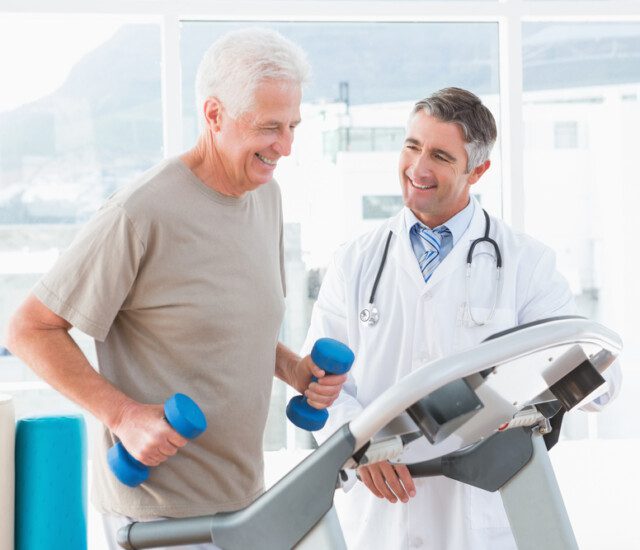True or false: A stroke can happen at any age.
It’s true. Though nearly 75 percent of strokes happen in people over age 65, age-related risk begins around age 55 and people of any age can suffer from stroke. And according to the Centers for Disease Control and Prevention (CDC), an American suffers from stroke every 40 seconds.
While most strokes are ischemic or caused by blood clots, plaques or other particles that block the blood vessels to the brain, there are also hemorrhagic strokes. These occur when a blood vessel in the brain bursts and damages nearby tissues.
A transient ischemic attack (TIA), also known as a mini-stroke, blocks blood flow to the brain for only a short time and acts as a warning sign for future stroke.
Regardless of the cause, strokes quickly damage brain cells due to lack of oxygen — and the parts of the body controlled by those areas of the brain show symptoms first.
3 Risk-Factor Categories of Stroke
Like mentioned earlier, a stroke can happen at any age. However, the CDC recognizes certain behaviors, conditions and family history that may increase a person’s risk of stroke.
Behaviors & Lifestyle
Unhealthy habits, including eating foods high in cholesterol, sodium and saturated fats, increase the chance of stroke. Physical inactivity, obesity, smoking tobacco and drinking too much alcohol can also negatively impact stroke risk.
Physical & Health Conditions
Chronic medical conditions, like high blood pressure, heart disease, high cholesterol and diabetes, may increase risk of stroke. And suffering a TIA or a previous stroke means chances of having another stroke are higher.
Family History & Genetics
A family history of stroke and certain genetic disorders, including sickle cell disease, may increase a person’s risk of stroke. Race or ethnicity may increase the likelihood of stroke, especially for Blacks, Hispanics, American Indians and Alaska Natives. Beginning after age 55, a person’s chance of stroke nearly doubles every decade. And stroke is more common in women than men.
While some of these risk factors are outside of your control, there is some good news. Experts from the CDC estimate up to 80 percent of strokes may be prevented by living a healthier lifestyle.
5 Common Symptoms of Stroke in Men & Women
By knowing the signs and symptoms of stroke, you may be able to act faster and save a life.
- Notice sudden weakness or numbness in the face, arm or leg, possibly contained to only one side.
- Have difficulty speaking, sudden confusion or trouble understanding speech.
- Experience sudden vision loss in one or both eyes.
- Have trouble walking, balance or coordination loss or dizziness.
- Severe headache or brief loss of consciousness.
It’s important to note: Do not drive yourself or someone else to the hospital that may be suffering from a stroke. Call 911 so medical professionals can assess and begin treatment as needed.
Acting F.A.S.T. for Stroke Treatment
To reduce damage to the brain from lack of oxygen, every minute counts. A quick assessment championed by the American Stroke Association helps determine if you or a person near you is suffering from a stroke. The most successful treatments for stroke are available only to those diagnosed within three hours of the first symptoms, so it’s important to take note of the time.
Remember the stroke acronym F.A.S.T. and you can help make the right call and call 911.
F — Face Drooping
Ask the person to smile. Does one side of the face feel numb or droopy or does the smile appear lopsided?
A — Arm Weakness
Ask the person to lift both arms up. Does one arm feel numb or drift downward?
S — Speech Difficulty
Ask the person to repeat a simple sentence. Do they have difficulty or is their speech slurred?
T — Time to Call 911
If the person is experiencing any of these symptoms, then it’s time to call 911 and get them to a hospital right away.
Every Minute Counts During a Stroke
When symptoms begin — either you or someone around you — call 911 right away. It’s impossible to know which type of stroke is occurring, and emergency care is always needed.
Be prepared for the unexpected and remember F.A.S.T. to detect early warning signs of stroke.
If you or someone you love has been impacted by stroke, Harbour’s Edge skilled nursing and rehabilitation center are here to support you, with help from our physical therapy, speech therapy and occupational therapy teams.


